Siberian Cat
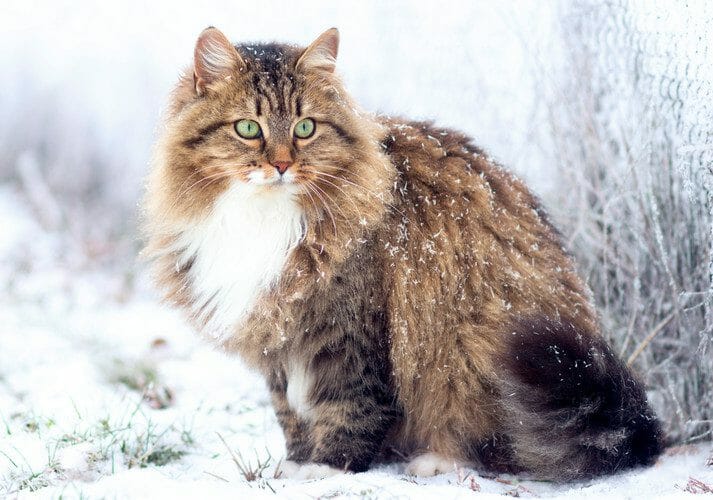
Siberian Cat Personality
Although the Siberian cat originated from colder climates, it is a warm, affectionate, and loving feline. With a great fondness for human companionship, these cats often follow their owners around the house and like to get involved in everything. Playful and active, the Siberian loves games such as fetch. This intelligent cat is a quick learner and will happily learn new tricks.
Siberian cats love water and are often found spending time under faucets or near the bath. This athletic climber also likes to find the highest spots in the house. These high vantage points allow them to be aware of everything that is going on around them.
Noise and activity around the home will not phase the Siberian. Its calm personality means it can confidently go about its business without worrying about any disruption. Although these cats are known to be affectionate and love the company of humans, they are not needy and will happily wait for their owners to give them attention.
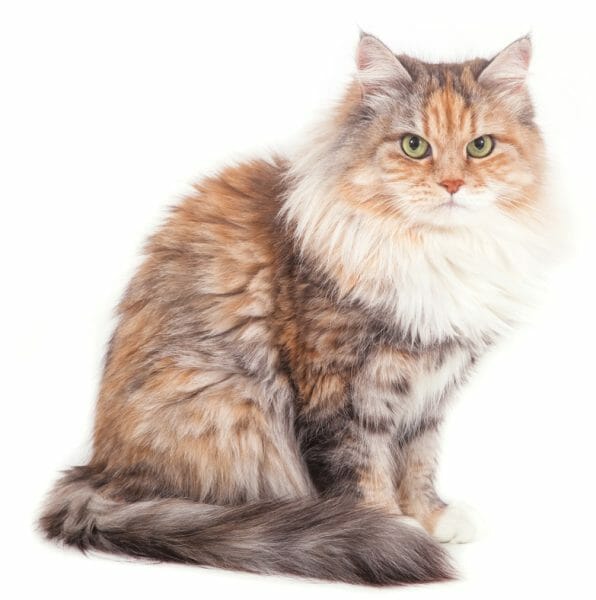
What Does a Siberian Cat Look Like?
The semi-longhaired Siberian cat is well-built and is considered a medium to large feline. Its head and coat quality are two of its most distinguishing features. The well-structured waterproof coat developed to help the cat survive in the extremes of the Russian winter.
When still a kitten, a Siberian’s fur will be soft. As the cat ages, the coat will become coarse on the outside, while the undercoat will remain soft and dense. There are many different colors and patterns associated with the breed.
Slow to reach maturity, Siberian cats are not fully developed until around four years of age. Female Siberians tend to be much smaller than males.
The head of the Siberian cat is a short wedge that has rounded contours, chin, and muzzle. Its cheekbones are low and broad with a moderately well-developed whisker pad. Facial features are completed by large oval eyes and rounded ears that are set broadly apart.
The muscular body of the Siberian is rectangular in shape. However, it should not be long. Legs are medium in length, and the paws tend to be large. Tails typically taper at the tip and may reach as far as the shoulder blade when outstretched.
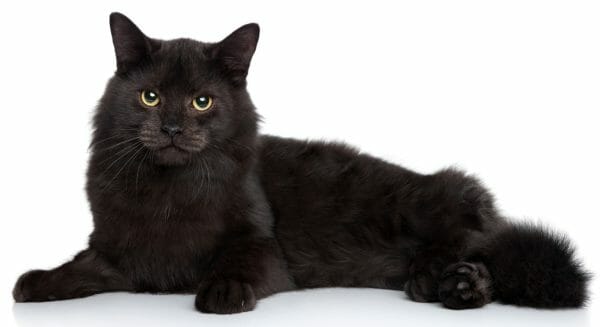
Are Siberian Cats Hypoallergenic?
Although there are no truly hypoallergenic cats, the low levels of dander found in the Siberian’s coat indicate that the breed may not cause the same type of allergic reaction as others.
Cat allergies stem from the Fel d 1 protein found in a cat’s saliva. This is passed onto their skin through grooming. When analyzing a cross-section of the Siberian cat breed, researchers found the highest levels of Fel d 1 in the silver Siberian Cat.
However, the low level of dander should not be taken as an indication that these felines will be suitable for an allergy sufferer. Always spend as much time as possible around a new cat to ensure it causes no allergic reactions.
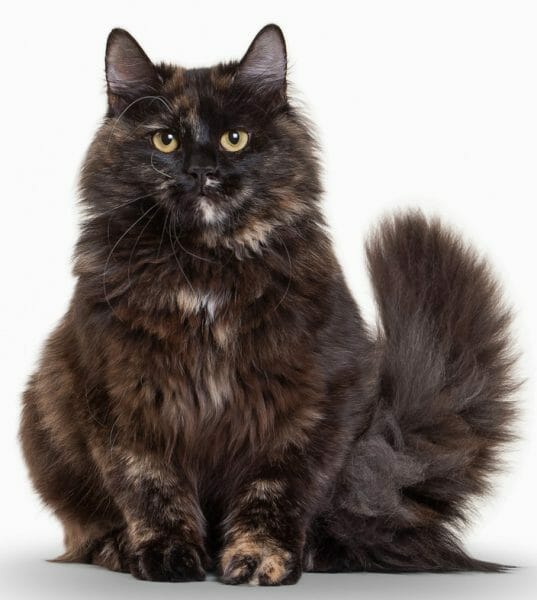
Siberian Cat History
Originating from Russia, this naturally occurring breed has potentially existed for hundreds of years. Although the breed’s exact history is unknown. However, Siberian cats are referred to in Russian fairy tales dating back to the Middle Ages.
Formally known as the Siberian Forest Cat, it is possible that the breed descended from Maine Coons or Norwegian Forest Cats.
In 1889, Harrison Weir’s book, “Our Cats and All About Them,” was published and provides one of the first written descriptions of the breed.
After the collapse of the Soviet Union and the end of the Cold War, Siberian cats started being exported to the United States beginning in 1990. Although importing the cats have since become cost-prohibitive, international interest in the breed has risen.
Because of regional variations between different Russian cat clubs, the Siberians first exported to the United States differed considerably. The earliest written standard was created in St. Petersburg by the Kotofei Cat Club in 1987. The breed has since been recognized by both The International Cat Association and the Cat Fanciers’ Association.
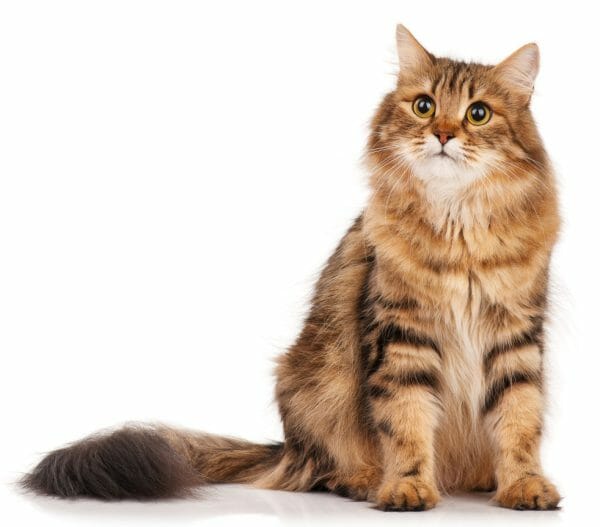
Siberian Cat Lifespan
If a good diet is provided and the cat is encouraged to remain active, a healthy Siberian can live for between 11 and 18 years. Regular check-ups with a vet and providing recommended vaccines (such as those for distemper and rabies) will help keep these felines in good health. In addition, MeowWiki recommends providing appropriate preventive medication, such as those for fleas, ticks, and heartworm.
Siberian Cat Health Issues
The Siberian has a few genetic health concerns that plague the breed, including hypertrophic cardiomyopathy and polycystic kidney disease.
- Hypertrophic Cardiomyopathy (HCM) is the most prevalent heart condition that affects cats. HCM causes the walls of the heart to thicken, which makes it difficult to pump oxygenated blood around the body. The thickened walls mean the heart must beat harder to push the blood to where it needs to be. Often, the heart muscles become starved for oxygen. If blood does not flow to the cat’s other organs and limbs, these can also be affected. Cats with HCM often experience additional health problems such as congestive heart failure and blood clots. There is no cure for HCM. However, if the condition is screened for and identified early, a veterinarian will be able to provide treatment that will improve the cat’s quality of life and reduce the risk of heart failure and blood clots.
- Polycystic kidney disease has been reported in the breed. This condition is present from birth and causes cysts to form in the cat’s kidneys. Over the course of a few years, these cysts will grow and, if left untreated, will bring about kidney failure. Genetic testing, urinalysis, and ultrasounds are used to diagnose the condition. Treatment options include fluid therapy and special diets.
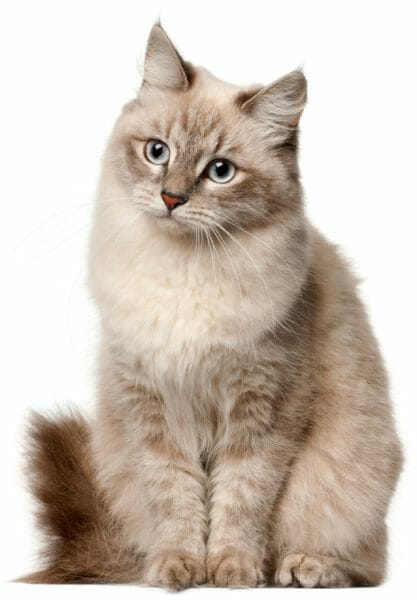
Siberian Cat Adoption
Before searching for a Siberian Cat for sale, always check to see if any are available to adopt. Many cats find their way to rescue shelters and need a new home. When looking for a potential adoption center, always use one with a no-kill policy. Organizations such as these will ensure healthy animals are never euthanized because capacity has been reached.



